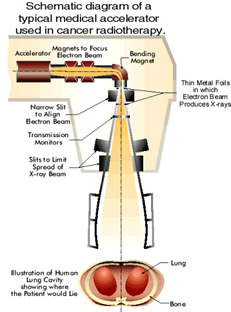Funny, Strange, Random Pics
- Thread starter Wintermute
- Start date
You are using an out of date browser. It may not display this or other websites correctly.
You should upgrade or use an alternative browser.
You should upgrade or use an alternative browser.
Tearofsoul
Ancient MMO noob
- 1,791
- 1,257
Tearofsoul
Ancient MMO noob
- 1,791
- 1,257
Tearofsoul
Ancient MMO noob
- 1,791
- 1,257
apraetor
<Silver Donator>
- 902
- 1,001
The ATM at a store I regularly shop at went on the blink a few months ago and showed the old Windows XP ScreenSaver when I walked past. I thought that was pretty fucked up. Guess it was not a fluke! :/

I service linear accelerators used for radiation therapy and they still run DOS 6.22. And on the low-energy side, most x-ray imaging systems that were installed more than ~5 years ago run XP; if you need a new PC they sell you one running XP.. only way to get upgraded to Windows 7 is to replace the entire room at a cost of $150,000+ because the PC is considered a component of the machine as a whole. Fujifilm STILL makes a digital reusable x-ray film suite which is XP-based, too.
It's not worth it to go through the FDA certification process again or do regression testing.. the security issues from using XP don't have real repercussions for the manufacturer, most of the blow-back hits the hospital. The hospital IT departments are stuck using a bunch of VLANs to isolate the equipment, hoping their intrusion detection catches stuff in time.
Rather than touch the design of the machine itself -- or even the control PC -- they've created increasingly-complex software which resides on a separate, networked PC which can control the accelerator over serial. It's a sufficient degree of abstraction to bypass the FDA, since the software isn't technically running the machine. The irony is that the machine is largely controlled by logic implemented in hardware, anyway; the DOS PC simply sets some initial states at beam-on.
Edit: I just noticed.. the image I included in this post is factually incorrect! The "thin metal foils" are not utilized for the production of x-rays; they are used to diffuse a pencil-thin coherent beam of electrons into a cone (look up the Therac-25 deaths to find out what happens when no foil is used). The machines can produce electrons at a variety of energy levels, Varian's Clinac High-Energy models do 6 MeV, 9 MeV, 12 MeV, and 18 MeV. As a result, a metal foil of differing topology and density is required to produce a final cone beam which is identical across all energies. The high-energy machines can also produce X-Ray cone beams; this isn't accomplished with foils. The coherent electron beam is fired into a solid chunk of copper; when electrons stop dead at relativistic velocities they give up their kinetic energy as bremsstrahlung. The energy of the emitted bremsstrahlung photons depends on the velocity of the electron beam fired, so by varying the velocities of the electrons we can produce x-rays of differing energy levels.
My machines use RF at 2.4 GHz, just like microwave ovens and wifi, to accelerate the electron beam. Only different is that they use about 60,000 watts produced by a klystron amplifier instead of a magnetron (the low-energy machines use a magnetron almost identical to a microwave, however, and are still in wide use as well).

Last edited:
- 3
- 2

- 1

Brad2770
Avatar of War Slayer
- 5,221
- 16,413
apraetor
<Silver Donator>
- 902
- 1,001
Burns
Avatar of War Slayer
Someone should let the Olympic gymnastics governing body know, then.

- 5
- 1

- 1

Rude
Potato del Grande
- 4,177
- 13,483
- 1

I've never wanted to be a cushion so badly.

- 1

- 1

Wombat
Blackwing Lair Raider
- 2,695
- 1,371
May have won the Oscar in 1942, but I always got a chuckle from the title.
- 4

- 1

- 1

Varia Vespasa
Ahn'Qiraj Raider
- 2,147
- 4,226
Share:




























